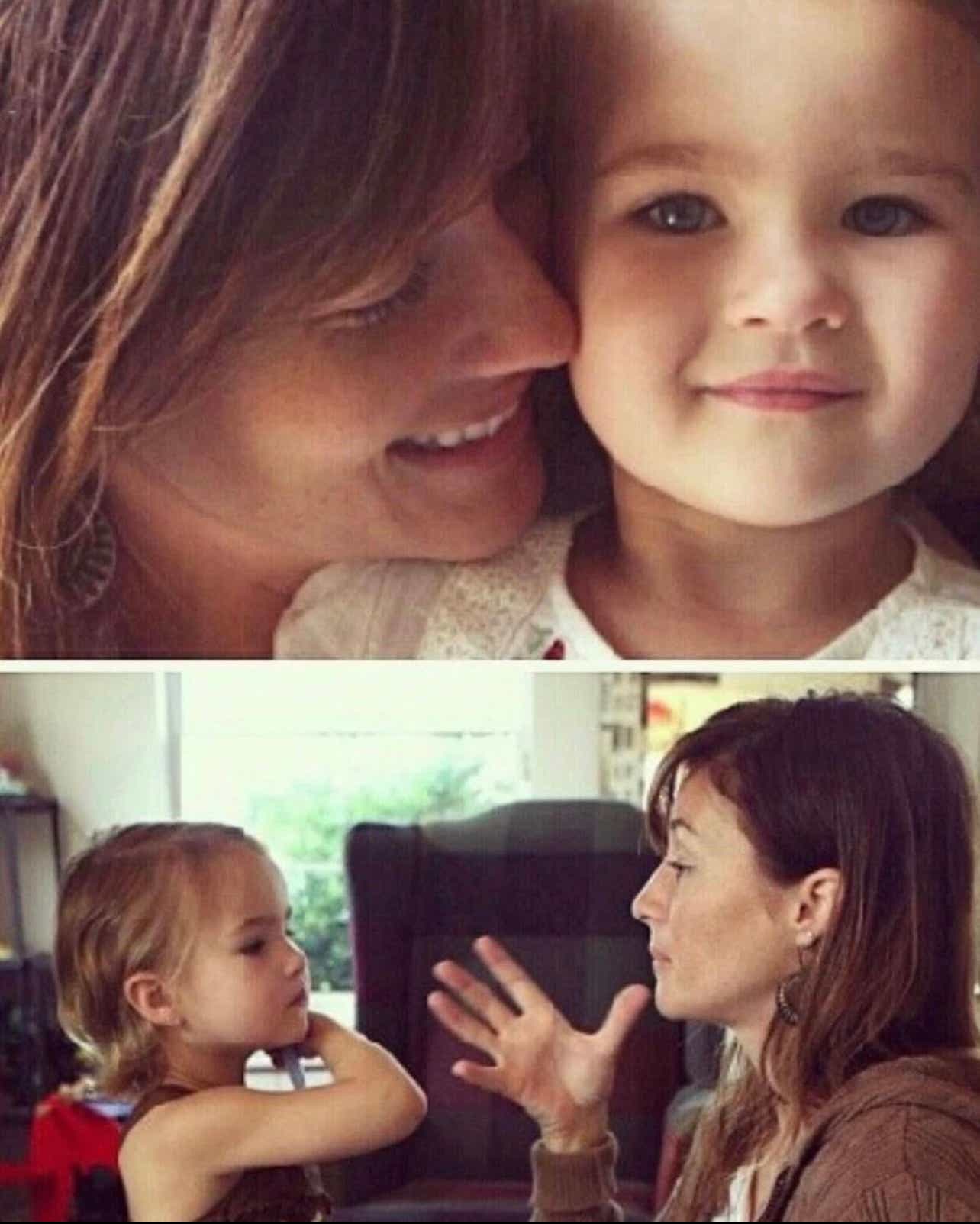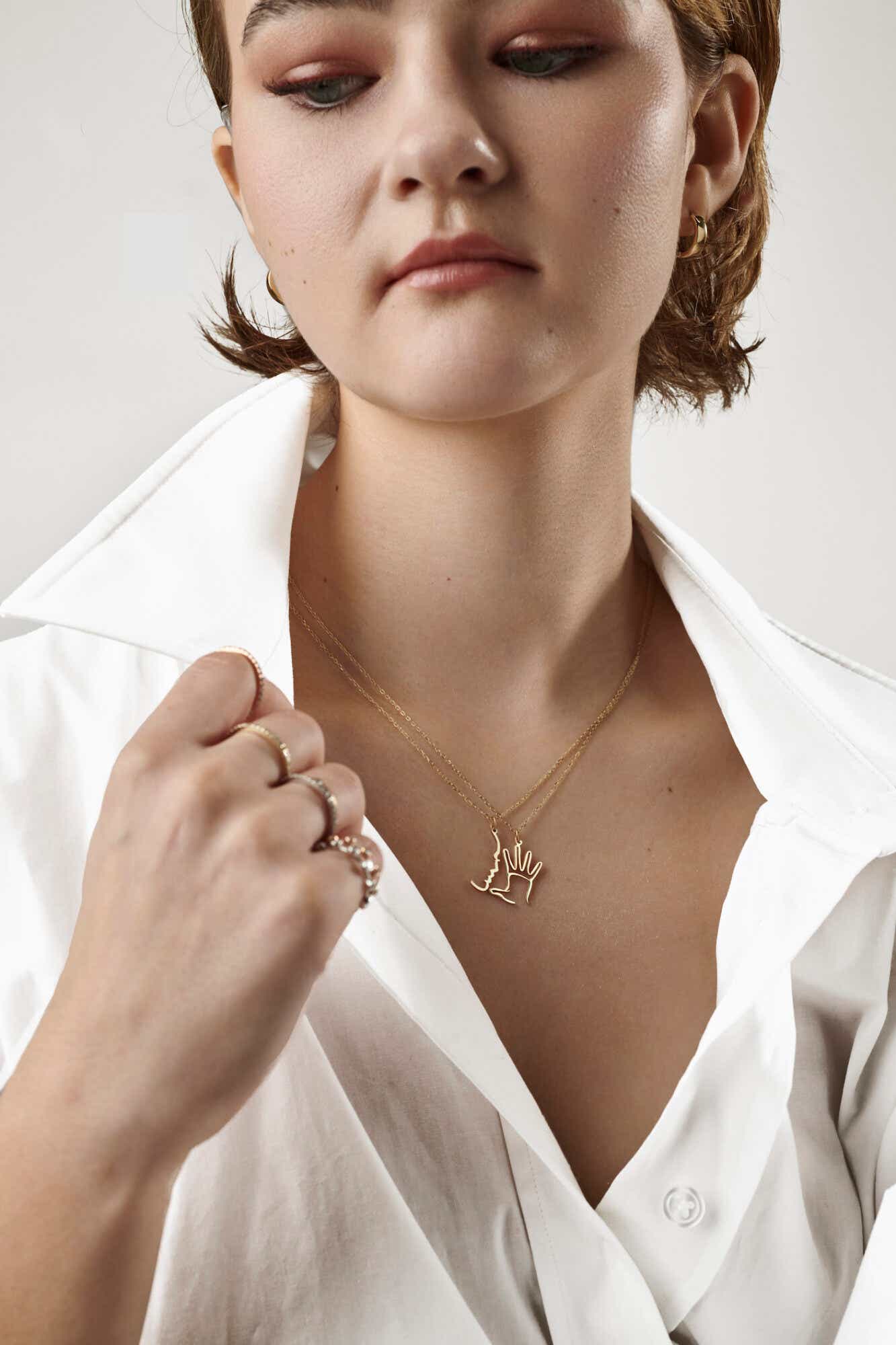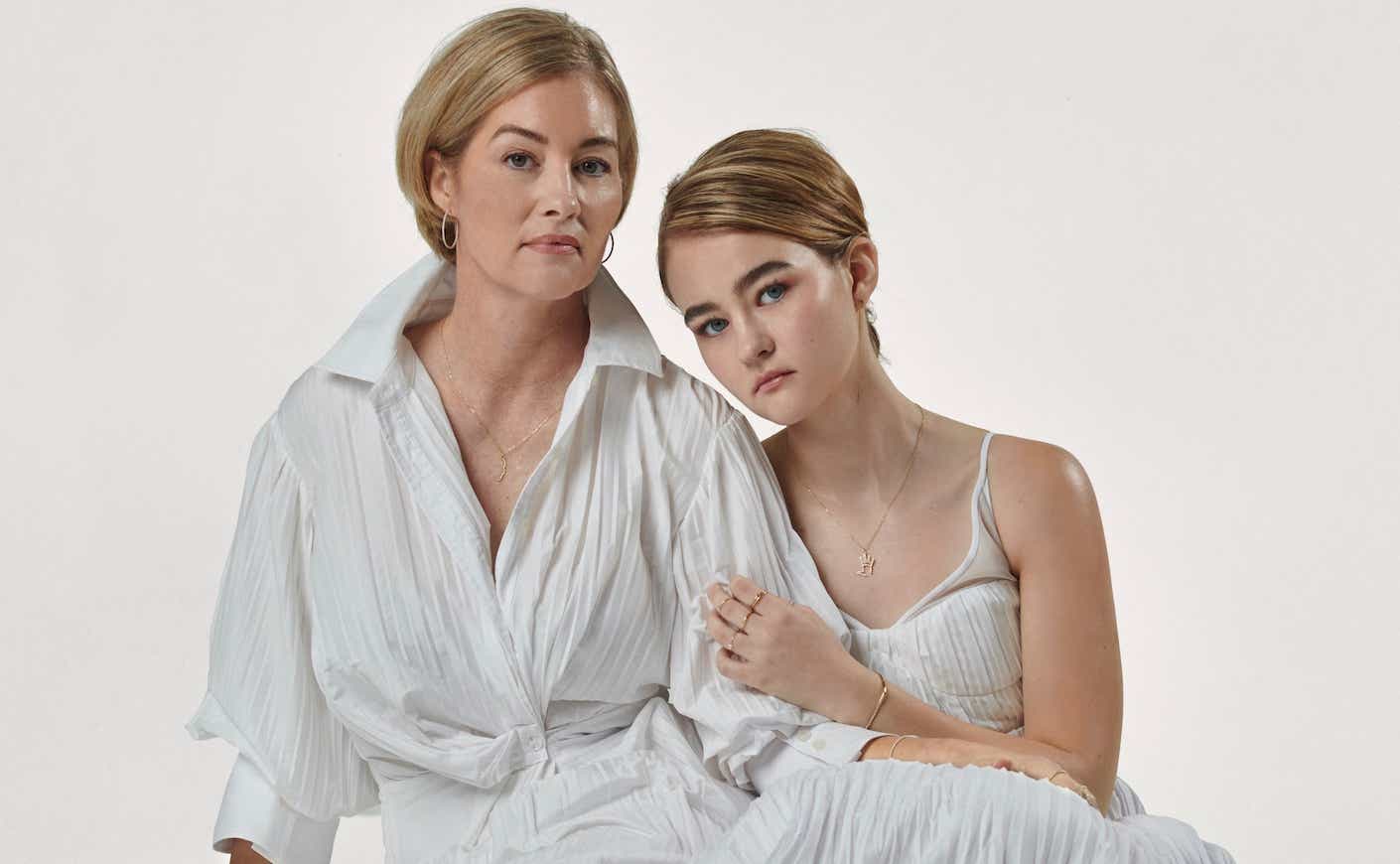By now, you’ve probably seen the heart-tugging breakout indie hit Coda, about a family of four in which three are Deaf. All four members of the family use sign language to communicate. The film’s success (including winning Best Picture at the 2022 Oscars) has been a huge feat for the Deaf community in terms of exposure and opportunity, and as the film’s popularity spread, so did awareness of how beautiful and passionate the American Sign Language is. But in some families with Deaf family members, using sign language is seen as settling. Especially when children are Deaf and the parents are hearing.
Ninety-five percent of Deaf children have hearing parents. But, shockingly, less than 10 percent of those parents learn or use ASL at home. This is because healthcare professionals often prioritize cochlear implants and learning to speak over ASL, and parents are often in denial of their child’s deafness, or simply unaware of the risks of not using ASL.
This happened to actress Millicent Simmonds, who lost her hearing as a child. Healthcare professionals discouraged Simmonds’ mother, Emily, from learning ASL and teaching her daughter to sign. But Emily, who isn’t Deaf, ignored that advice, understanding that ASL was the fastest way she would be able to communicate with her child.

“My mom decided that being able to communicate and have a relationship was more important than forcing me to speak,” Simmonds, who starred in both Quiet Place films, tells KCM.
“Deaf children who do not have enough access to spoken language and also do not learn to sign suffer language deprivation,” says Paula Pittman, director of non-profit SKI-HI and Deaf Mentor Outreach. “Without language that is easily accessible, they struggle with personal relationships, academically and are limited in their life and career options.”
Emily received services from a Deaf Mentor who had been trained by SKI-HI Institute’s National Deaf Mentor Program. The mentor taught them ASL and introduced them to Deaf culture.
“Sign Language has impacted my life in every way,” Simmonds says. “Had my mother solely relied on cochlear implants and not learned sign language, I can’t imagine how frustrating that would have been for both of us. There’s no risk in learning sign language. However, you are risking family relationships if you don’t. Who wants to risk that?”
Because of the role her mom has played in her life, Millie’s favorite sign is “mom.”
“‘Mom’ was the word I first signed. I would not have the opportunities or career I have without knowing ASL — and that’s a decision my mom made when I was an infant.”
So, for Mother’s Day this year, Millie designed an ASL charm to raise money for the non-profit that taught her family ASL. The 14K solid gold charm is the sign for mom — an open hand with the thumb pointing toward the profile of a chin. All sales through the end of May will benefit SKI-HI.
Millie spoke to us about growing up surrounded by people who could hear (she thought her family was Deaf for a while!), how Coda has changed the landscape for the Deaf actors, and possibly playing Helen Keller.
KCM: How old were you when you started learning Sign Language?
I lost my hearing when I was 2 months old. Doctors and audiologists advised my mom, Emily, to not sign with me. She went against their advice and sought out the Deaf Mentor program. My first sign was “mom,” which I signed at 6 months old.
Does your whole family know sign language? Was there ever any question or hesitation?
When my mom learned I was deaf, she contacted the SKI-HI program without hesitation. SKI-HI appointed a Deaf mentor to come to our home to teach my family sign language and introduce us to Deaf culture. We all learned to sign. Without this program and the early intervention program, my family wouldn’t have had access to learning the language.
I wouldn’t have the relationships or the opportunities I’ve had without knowing ASL. Parents and their deaf kids need access to this language. Unfortunately, in recent years, the program has struggled because states no longer want to fund it.
Were you learning sign language with other families? Did you know of other Deaf children who weren’t learning Sign Language?
I was surrounded by my family. My mom didn’t have a lot of support from her family to learn ASL, so she sought out support from the local community. She enrolled in ASL family camps and activities in the area. Our Deaf Mentor would come to our house and visit us around twice a week to teach my family Sign Language. I started going to a deaf school at age 3. I wasn’t really aware that my friends’ families were not learning until we were older and they could communicate that to me. I was shocked to learn that they couldn’t communicate at home. I didn’t know how common it was.
I’ve experienced it and seen firsthand the struggles and frustration that kids have when they can’t communicate with their families. It needs to change.
Did you pursue cochlear implants or anything else as well as learning ASL?
I have cochlear implants. But, I think people should know that there is no one way to be deaf. There are so many different ways. Some people have cochlear implants, some wear hearing aids and some people prefer neither. Deafness is considered the “invisible disability.” You could walk by a deaf person and not know it. If someone doesn’t answer you right away, don’t assume you’re being ignored. Be patient and try to communicate as best as you can using gestures or facial expressions. Learn some basic ASL! You never know when you might be able to use it.
What was it like working with your mentor from SKI-HI Institute’s National Deaf Mentor Program? How did they immerse you in deaf culture?
I was very young so I don’t remember a lot about the visits, but I don’t remember ever feeling frustrated that I couldn’t communicate with my mother. I never felt I was different when I was around my family. In fact, I thought they were Deaf for a long time. I think I was 6 when my mom told me she could hear. I just assumed because they knew ASL, they were deaf. I never felt that I was different or not accepted by her.
How has your mom impacted your journey as a woman, an actress, and in Deaf culture?
My relationship with my mom is the most important relationship that I have. She’s both my strongest supporter and my inspiration.

What sign means the most to you and why?
“Mom” was the word I first signed. I would not have the opportunities or career I have without knowing ASL — and that’s a decision my mom made when I was an infant.
That’s why I chose the sign for “mom” for the Cut + Clarity 14K gold Millie ASL Mama pendant. When the founder Mariana Russo Chambers invited me to design something, I wanted it to be unique and not the same “I love you” sign in ASL that’s everywhere. And Cut + Clarity dedicated its Mother’s Day campaign to it.
Seeing ASL in public is important and helps it become an accepted and celebrated language. I hope the Millie ASL Mama charm inspires parents with deaf kids and encourages them to learn the language. It’s a beautiful language.
Gifting the Millie ASL Mama pendant is a win-win-win. The recipient gets a beautiful 14K gold charm sustainably made in NYC by a woman-owned business, SKI-HI gets funds they need to update their curriculum, and families get the gift of learning ASL with their child. I cannot think of a better Mother’s Day gift.
You’re being considered for the role of Helen Keller. How are you feeling about it?
Taking on the role of Helen Keller is a huge responsibility. She is not just a character on a page or in a movie. I have always been inspired by her story. We are taking our time and really want to get it right.
What did it mean to you to see Coda win all those Oscars? What does this mean for the Deaf community?
I could not be happier for Troy [Kotsur]. He is so genuine and it feels like there is real momentum behind the deaf community. I would love to see more Deaf people on screen. I would love to see more Deaf people behind the screen as well. I’m currently executive producing and starring in a TV series adapted from a book called True Biz by Deaf author Sara Novic. It’s now a New York Times bestseller! We’re really excited. It will be the first series led by two Deaf women!









